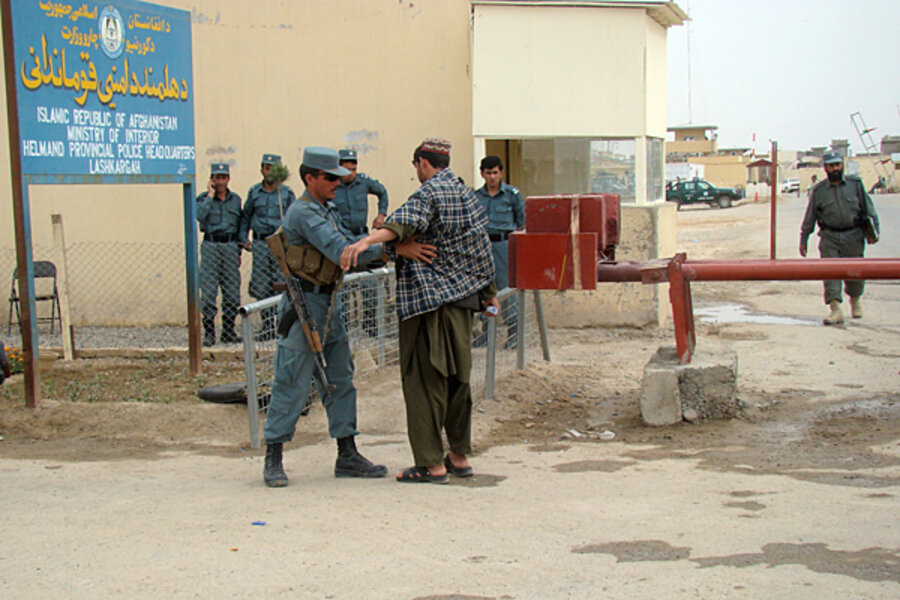First Taliban, now turncoats: Another Afghan soldier opens fire
Loading...
| Kabul, Afghanistan
Two British soldiers were gunned down by an Afghan soldier in southern Afghanistan today, in the latest incident involving NATO soldiers killed by their Afghan counterparts.
This most recent attack is one of many similar killings that have strained already tense relations between the international and Afghan forces here, ratcheting up concerns that such incidents may increase after Qurans were burned on a US base last month and an American soldier, Staff Sgt. Robert Bales, allegedly killed 16 Afghans.
Today's shooting brings the death toll of "green on blue" killings, incidents in which Afghan security forces kill coalition troops, up to 15 this year.
“The Afghans are becoming more ideologically opposed to the foreigners being here day-by-day,” says Massoud Khan Nourzai, a member of parliament from Helmand, where today's shooting took place. “It doesn’t affect the general security situation in Afghanistan, but it of course encourages more Afghans to take actions like the one today.”
According to a local police official, an Afghan Army vehicle was stopped at the entrance to a NATO base in Lashkar Gah, the capital of Helmand province. The guards reportedly told the Afghan soldiers they were not allowed to enter. After waiting outside the base, one of the Afghan soldiers rushed into the base and opened fire, killing two British soldiers before he was shot dead.
While details are still emerging about the shooting, it appears that it was motivated more by personal reasons than insurgent infiltration. This has been the case in a number of such attacks, including the deadliest, which happened last April when an Afghan Air Force pilot with more than 20 years of service killed eight US soldiers and one American contractor.
Such incidents have eroded the trust between international and Afghan troops and could prove disastrous for the future of the Afghan military. After the foreign forces' mission here ends in 2014, the Afghan military is expected to need $6 billion in foreign support.
It remains unlikely that incidents such as Monday’s will affect the decision of international backers to provide continued support, but a similar incident that killed four French troops in January prompted calls for France's early withdrawal.
“The recent incident in Afghanistan where Afghan soldiers started shooting NATO soldiers and NATO soldiers started going out and killing civilians has created more tension,” says Jafar Kohistani, a political analyst in Kabul. “NATO has been involved here for 10 years and they’ve spent a lot of money and made a lot of sacrifices. Now all these efforts should not be sacrificed for individual acts like this Helmand killing.”
Both Afghans and internationals looking to smooth over tensions face considerable challenges in winning back many in the general public, whose frustration with the West has reached peak levels after nearly 11 years of having NATO-led troops in their country.
“In many meetings with the foreigners, we have told them that the kind of behavior that you do in Afghanistan is even worse than the behavior of the Soviets who clearly came here to occupy Afghanistan,” says Sardar Mohammad Khan, a teacher in Lashkar Gah. “If someone does such things and harms the Muslims of Afghanistan and their religion and culture, they will definitely face a reaction.”
– Zubair Babakarkhail contributed to this report.







